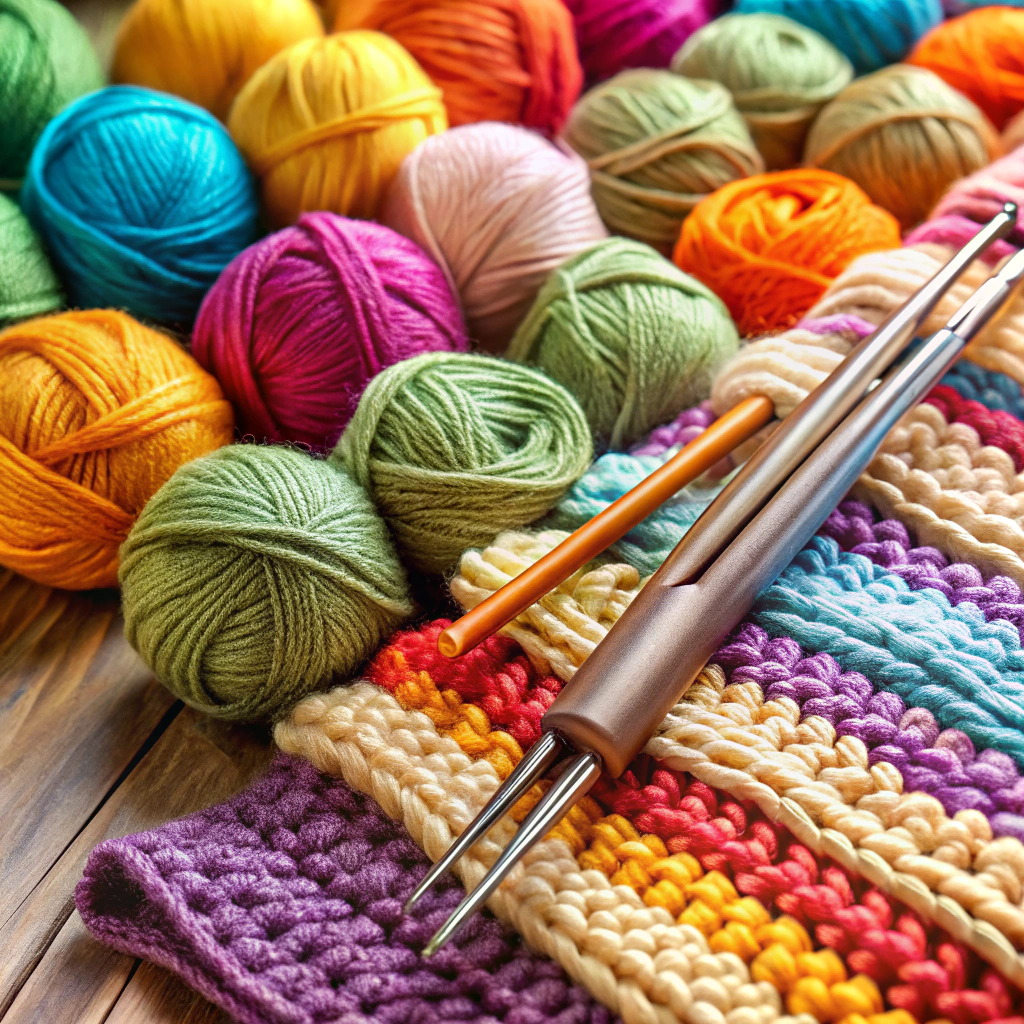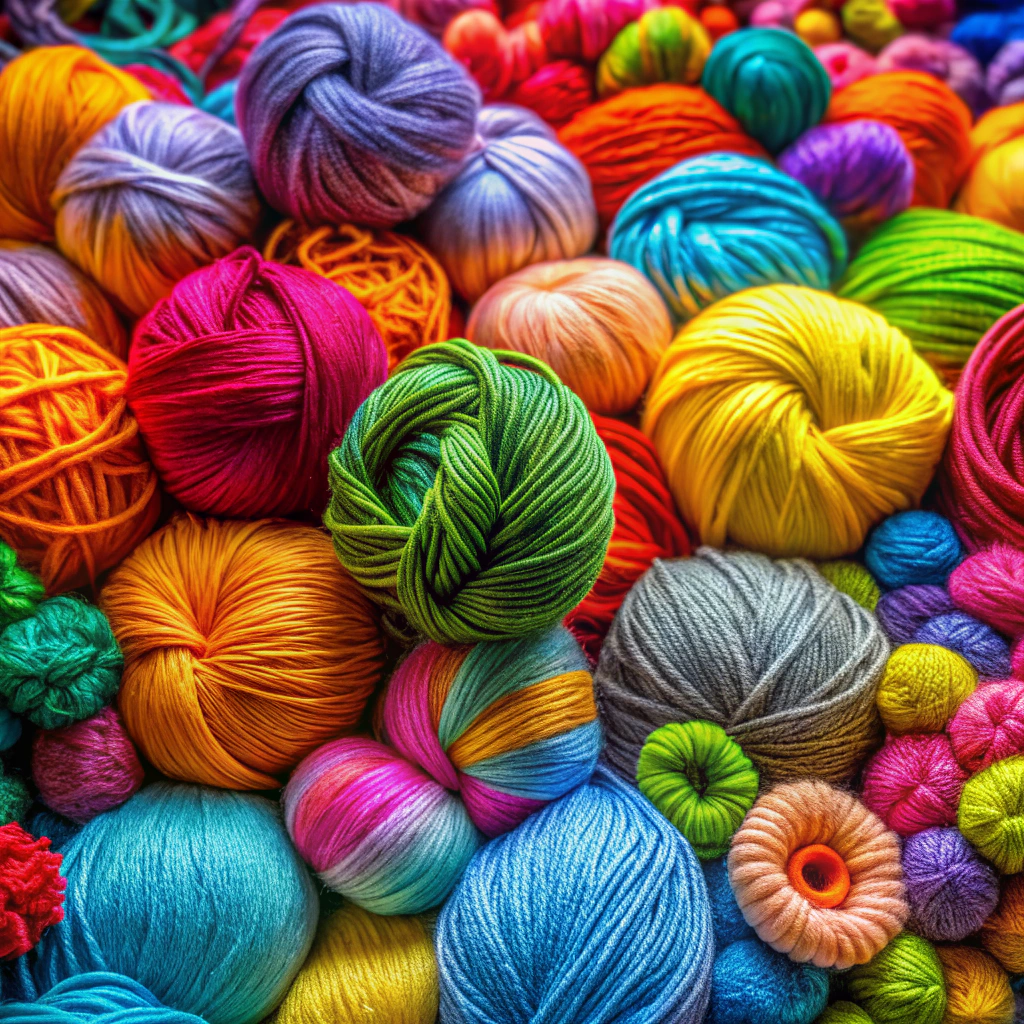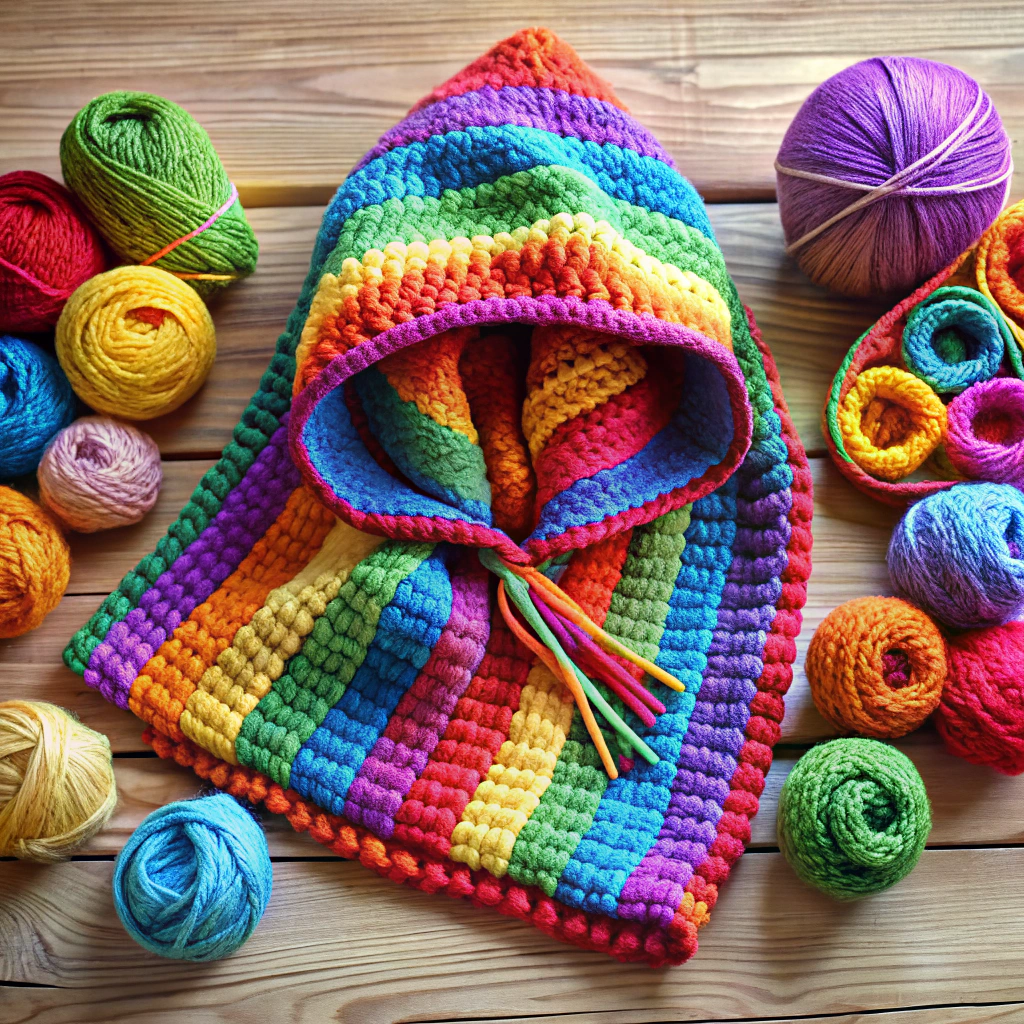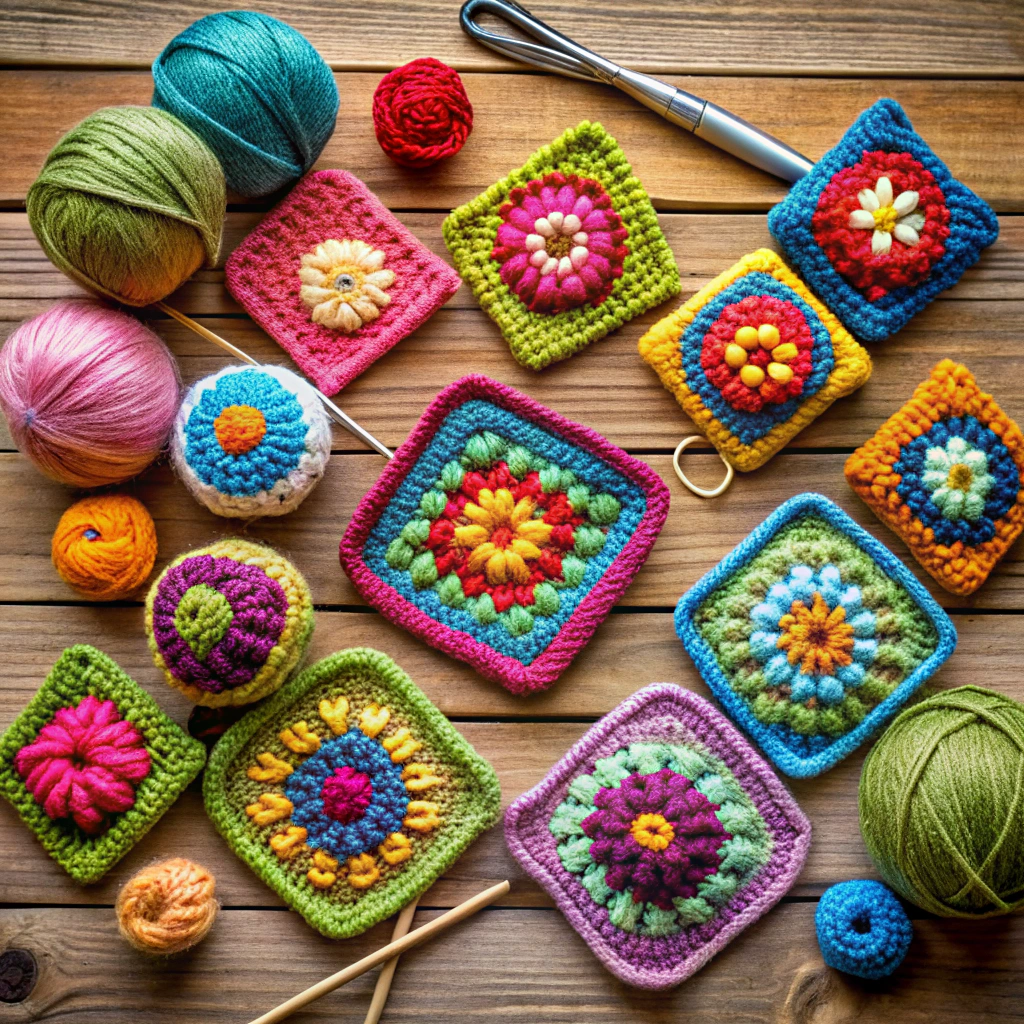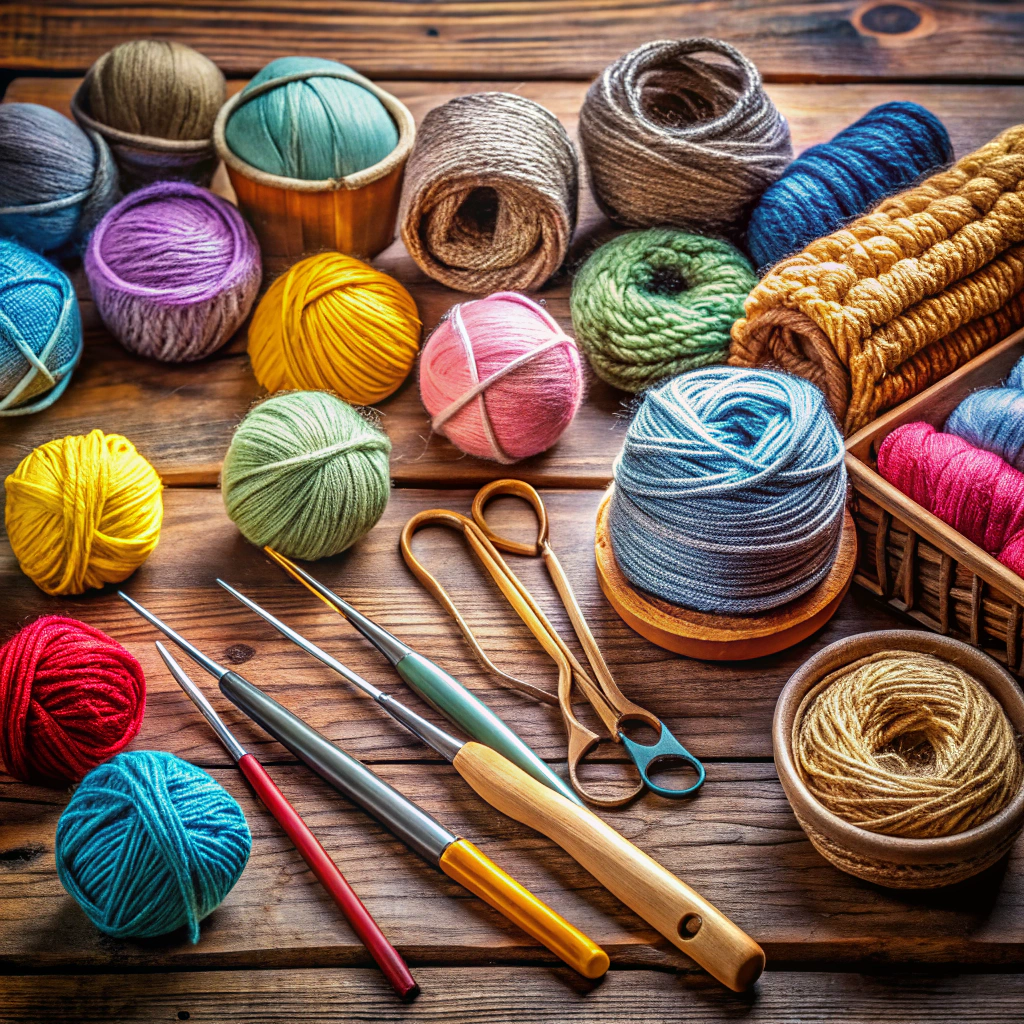Discover how crochet hook sizes impact your crafting project’s flexibility, stitch definition, and yarn compatibility.
Ah, crochet hooks—the magic wands of the crafting world. They come in sizes so varied and markings so bewildering that they might as well be hieroglyphics. Get ready to dive into the world of hooks, where choosing the right size can turn your project from tangled chaos into a masterpiece. Is your blanket coming out more credit card than coverlet? Perhaps it’s all about that hook. Whether you’re wrangling with gauges, scaling dimensions, or just trying to unravel the mystery of metric versus US conversions, this guide’s got your back. Let’s untangle the tale of hook sizes—no magnifying glass required.
Key takeaways:
- Crochet hook sizes affect project flexibility and gauge.
- US and metric sizes can differ; conversion is key.
- Larger hooks create loose stitches; smaller hooks tighten.
- Choose hook size based on yarn weight and pattern.
- Practice swatching ensures correct tension for your project.
Comparison of Crochet Hook Sizes and Their Markings
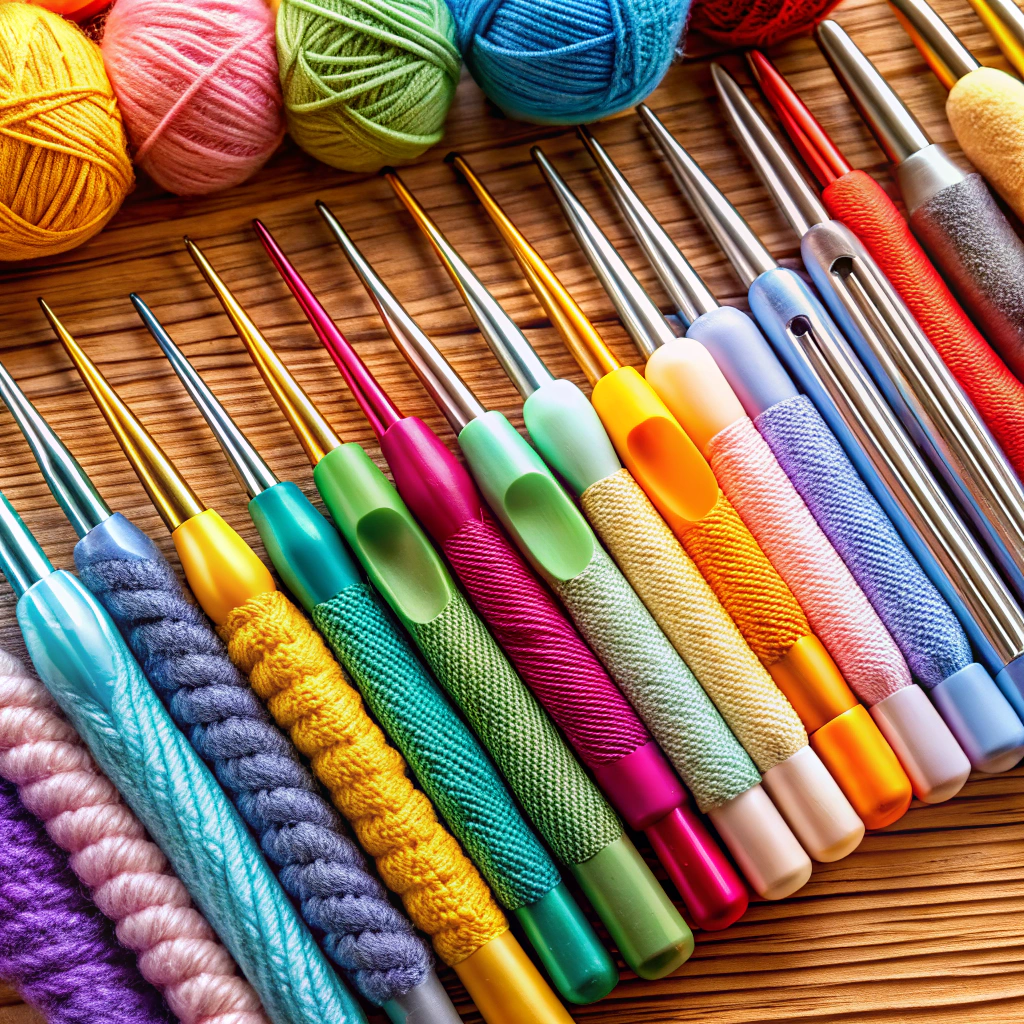
Navigating the world of crochet hooks might feel a bit like deciphering ancient scrolls, but fear not. Each hook comes with its own special code—a magical symbol or number representing its size. In the US, hooks are labeled with letters or numbers, like a clandestine meeting where G is in the middle of the gang.
Across the pond, metric sizes come to the rescue—a numerically logical system measured in millimeters. These sizes precisely indicate the diameter of the hook’s shaft, which is where the magic really happens.
But watch out for imps disguised as uneven standards! Sometimes, different manufacturers of hooks, like dragons with their quirks, might have slight variations in sizing. Always double-check, or be ready for surprises like nights on a Hobbit journey.
The markings on the hooks are etched or painted, whispering the hook’s identity to you. Though sometimes these marks fade away faster than candy in a toddler’s hands, fear not—organize them well or keep a trusty conversion chart handy. Hooks come in multiple materials like aluminum, wood, or acrylic, adding to the tapestry of choices. Choose wisely, young crocheter, the size and material will shape your yarn tale.
Impact of Hook Size On Tension and Gauge
Bigger hooks create looser stitches, leading to a relaxed gauge. Imagine your project as an afternoon nap — comfy and unhurried.
Smaller hooks, on the other hand, get serious. They produce tighter stitches and a firmer gauge, perfect if you’re aiming for sleek and tailored rather than cozy couch potato.
When tension and gauge don’t match what’s suggested in your pattern, you might end up with a too-small hat or a scarf that could double as a tablecloth. It’s like opening a bag of chips to find it’s mostly air. Sneaky, right?
Remember, the hook is your magic wand. The way you wield it can transform a project, so nab the right one to keep your stitches in line!
Relationship Between Hook Size and Yarn Weight
Opting for the right hook size is like finding the perfect dance partner for your yarn. Too small, and your yarn will be squished and tense like it’s at a boring party. Too large, and it may feel unsupported and floppy.
Yarn labels are often the matchmaking gurus, suggesting the best hook sizes for the yarn weight. Worsted weight yarn? It loves dating a 5.5mm hook. Lace yarn? Prefers a dainty 1.75mm hook.
Remember, different yarn weights flirt with varying hook sizes to achieve the texture and tension you want. Bulky yarns need larger hooks for airy stitches, while thinner yarns and their smaller partners make dense, intricate designs.
Choosing a hook wisely for your yarn colonizes your projects with the perfect balance of elasticity, texture, and overall pizzazz. And let’s face it, avoiding those tension tantrums makes everyone happy!
Choosing the Correct Hook Size for a Project
Getting the right hook size for your project can mean the difference between a masterpiece and a tangled mess of yarn that only your cat will appreciate. The perfect hook size is like Goldilocks’ porridge—not too big, not too small, but just right.
First off, follow the yarn label. It’s got all the juicy details you need, including the recommended hook size. It’s not a law, but it’s a great place to start. Remember, yarn labels are your friends, not your frenemies.
Consider the pattern. Designers specify hook sizes for a reason, and unless you’re channeling your inner crochet rebel, it’s smart to heed their advice. They’ve done the legwork, so you don’t have to.
Think about the end product. If you want something light and airy like your grandma’s bygone perms, a larger hook might be your best buddy. For tight, sturdy work, lean towards smaller hooks. Think of it like choosing between a feather and a brick for a pillow.
Your crochet tension is unique, just like your favorite funky socks. If you tend to crochet tightly, opt for a slightly bigger hook. And if you’re looser than a goose, go down a size or two. It’s all about balance, my friend.
Metric and US Crochet Hook Size Conversion
Crochet hooks are like international mystery spies, each sporting a secret alias depending on where they’re from. Understanding these aliases—aka sizes—can save you from crochet chaos.
First, metric sizes measure the diameter of the hook in millimeters. Easy peasy, lemon squeezy.
Next, grab your magnifying glass for US sizes, which prefer letters and numbers. Higher numbers or letters typically mean larger hooks.
When in doubt or sharing patterns with pen pals, online conversion charts are a crocheter’s best friend. Just remember that centimeters and inches don’t see eye to eye, so a quick conversion lets your projects travel smoothly across the globe or just your living room.
Effect of Hook Size On Final Project Dimensions
When it comes to sizing, crochet hook choice shapes the destiny of your project. A larger hook creates bigger stitches, making your blanket more spread-eagled on the couch. You fancy a dainty doily? A smaller hook will whip up those tiny, intricate stitches, even if it does make your eyes squint like they’re auditioning for the role of ‘narrowest squint in town’.
Hooks are the architects of crochet. Want a sweater that doesn’t fit the cat instead of you? Stick closer to the specified hook size. But, feeling adventurous? Change things up! Larger hooks contribute to larger projects with a breezy, relaxed feel. Smaller hooks craft dense, cozy fabric, effectively cocooning you in a yarn-made fortress. Just remember, every hook swap is a new architectural blueprint. Never be tied down—unless it’s with your yarn, of course.
Adjusting Hook Size to Alter Texture and Drape
Picture this: you’re working on a lacy shawl, and you want that elegant drape that dances in the wind like a poetic scarf commercial. Reach for a larger hook. The bigger size allows stitches to be looser, creating a fluid and soft texture.
For a sturdy, structured basket that’s ready to hold all your unfinished projects, grab a smaller hook. It makes stitches tighter, resulting in a dense fabric that can stand upright.
Hook size is a magical wand in your crochet toolkit. It alters the personality of your yarn from waterfall cascade to stone fortress. Have fun with it, and let your hook size decide the mood of your masterpiece.
Tips for Selecting Your First Crochet Hook Size
Starting your crochet journey can be as bewildering as deciphering a secret code. Fear not; let’s simplify.
Firstly, consider the yarn’s weight. Match your hook size to the yarn label’s suggestion. It’s like choosing the perfect dance partner; harmony is key.
Next, aim for a medium-sized hook. Size H (5 mm) is often the Goldilocks of hooks—not too big, not too small, but just right for beginners. It works wonders with worsted weight yarn, a friendly yarn for novices.
Try a hook with an ergonomic handle. Your hands will throw a party for you. Comfort is crucial, especially when chasing those long crochet evenings.
And don’t overlook this gem: practice swatching. Start crocheting small squares to test your grip on tension. It’s like warming up before a crochet marathon.
Lastly, don’t be afraid of a little trial and error. Every crocheter drops a few stitches before they learn to make magic. Happy hooking!
Common Mistakes in Selecting Crochet Hook Sizes
So you’ve picked out your yarn, your pattern, and you’re ready to dive in. Wait! Watch out for these pitfalls.
First up, relying solely on the pattern’s suggested hook size. Patterns are like life coaches—they recommend, but they don’t know your tension! Always swatch first to ensure your gauge matches.
Next, ignoring yarn labels can lead you down the rabbit hole of regret. Those labels aren’t just decoration; they offer valuable advice on the suitable hook size for optimal results.
Underestimating the difference between hook sizes can lead to chaos. Changing even a fraction of a millimeter can turn a cozy sweater into a cat’s sweater-cozy.
And lastly, letting your excitement grab the first hook that glimmers from your stash. Take a breath, my friend. Make sure it’s the right size, or you’ll end up with an avant-garde interpretation of what you intended to create.
Stay savvy, and remember, knowledge of hooks leads to triumph!
